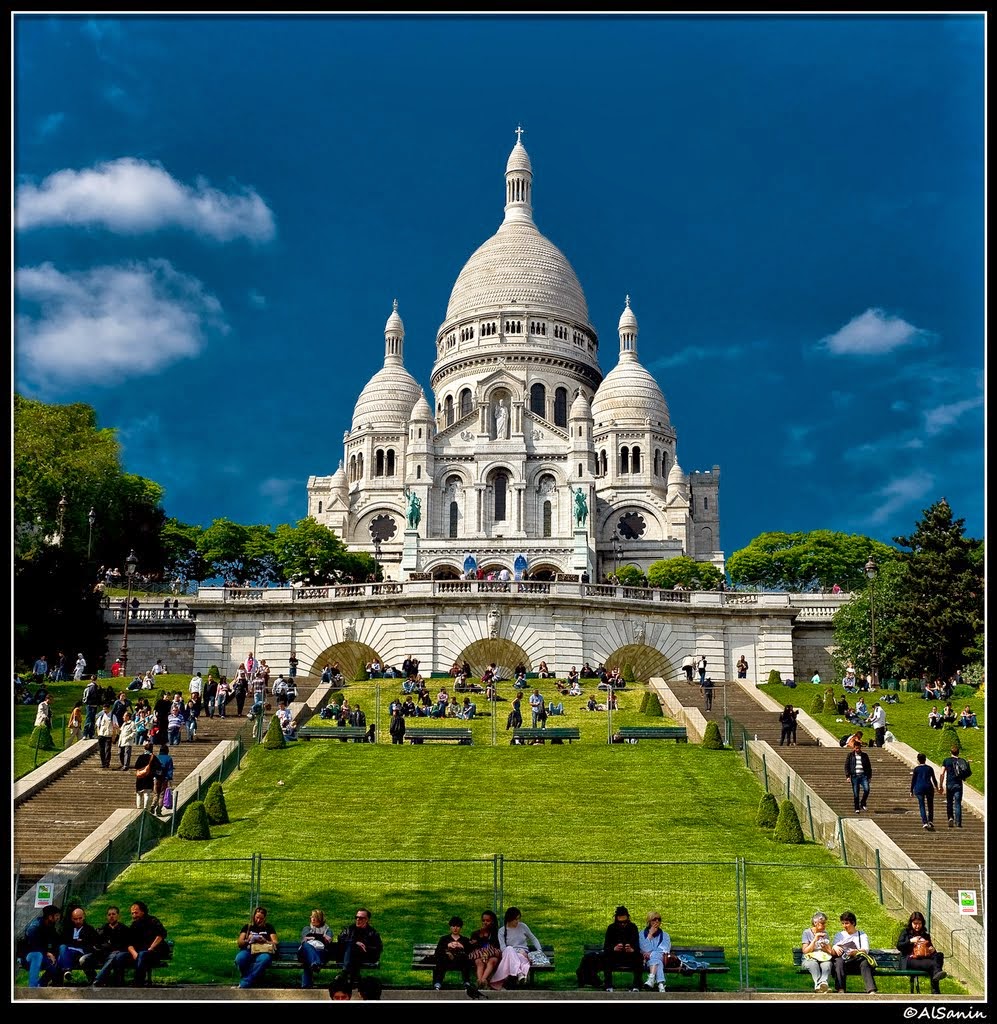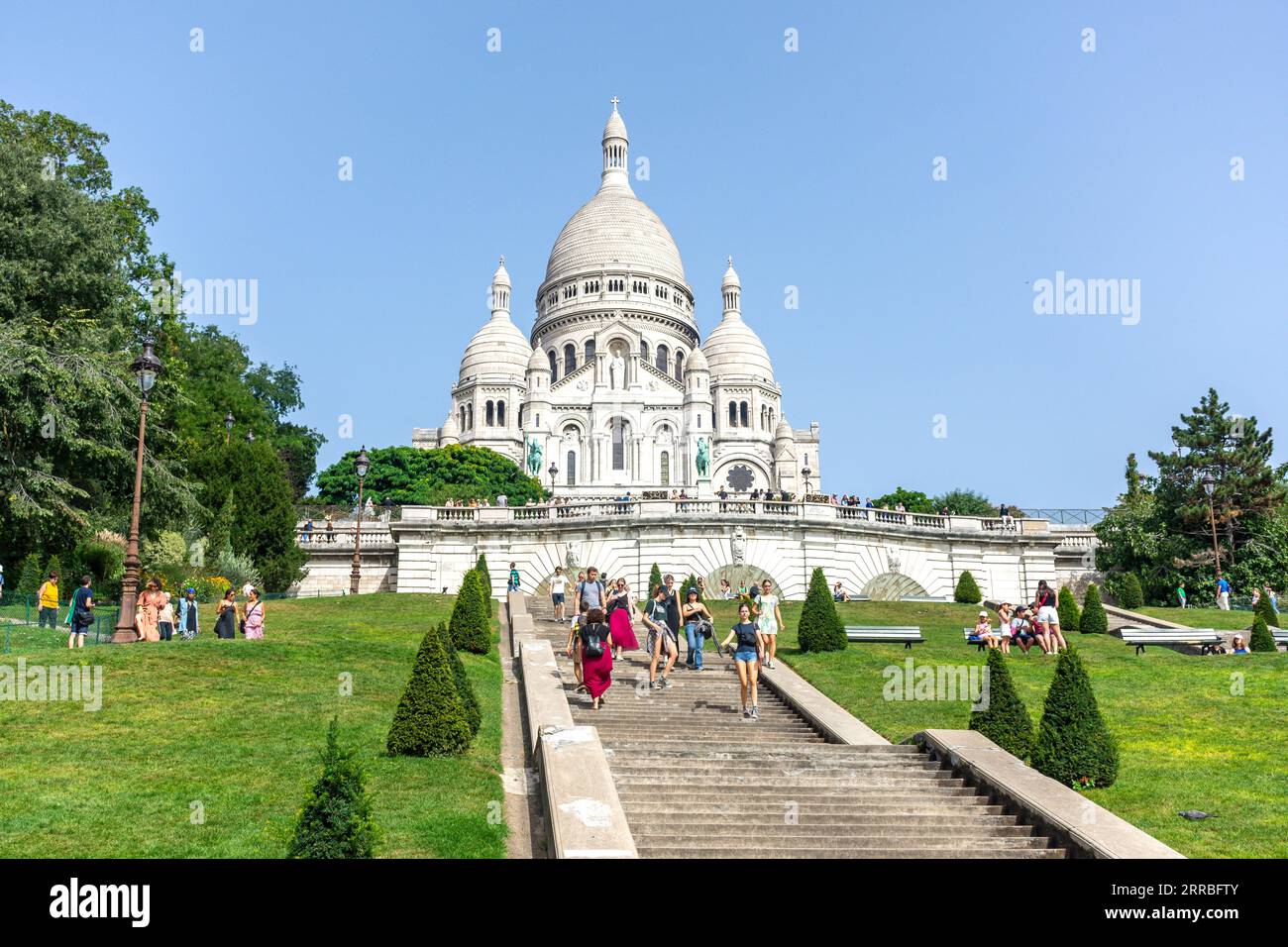Perched atop the highest point in Paris, the Basilica of the Sacred Heart of Montmartre, or Sacré-Cœur Basilica, stands as a beacon of faith, art, and history. Its gleaming white façade, a testament to Romanesque-Byzantine architecture, dominates the Parisian skyline, drawing millions of visitors each year. While the basilica is renowned for its breathtaking panoramic views and artistic treasures, it is also a vibrant center of worship, where the daily celebration of the Mass forms the heart of its spiritual life.
A History Etched in Faith and Patriotism
The story of the Sacré-Cœur Basilica is intertwined with the tumultuous events of 19th-century France. Following the Franco-Prussian War of 1870-1871, which resulted in a devastating defeat for France, Alexandre Legentil and Hubert Rohault de Fleury made a vow to erect a church dedicated to the Sacred Heart of Jesus if France were spared from complete destruction. They attributed France’s misfortunes to a moral and spiritual decline and believed that a public act of repentance and consecration to the Sacred Heart would bring about national healing and renewal.
Their proposal gained widespread support, and in 1873, the National Assembly officially sanctioned the construction of the basilica. The chosen site was Montmartre, a historic hill known for its artistic community and its role in the Paris Commune uprising. The foundation stone was laid in 1875, and the basilica was finally consecrated in 1919, after decades of construction.
Architectural Marvel: A Blend of Styles
The Sacré-Cœur Basilica stands out for its unique architectural style, a harmonious fusion of Romanesque and Byzantine elements. The design, conceived by architect Paul Abadie, draws inspiration from churches like Saint Mark’s Basilica in Venice and Hagia Sophia in Istanbul.
The basilica’s exterior is characterized by its brilliant white travertine stone, quarried from Château-Landon. The stone has the remarkable property of self-cleaning, ensuring that the basilica retains its pristine appearance over time. The façade features four domes, with the central dome reaching a height of 83 meters, offering unparalleled views of Paris.
Above the main entrance, a large mosaic depicts Christ with outstretched arms, symbolizing the Sacred Heart’s love and compassion for humanity. The basilica’s bell tower houses "La Savoyarde," one of the world’s heaviest bells, a gift from the Savoy region of France.
Interior Splendor: Art and Devotion
The interior of the Sacré-Cœur Basilica is equally impressive, showcasing a wealth of art and symbolism. The vast mosaic covering the apse, one of the largest in the world, depicts Christ in glory, surrounded by saints and angels. The mosaic serves as a powerful reminder of the basilica’s dedication to the Sacred Heart.
The basilica’s stained-glass windows cast a warm, ethereal light, creating an atmosphere of serenity and reverence. The chapels that line the nave are dedicated to various saints and offer spaces for private prayer and contemplation. The crypt beneath the basilica houses the tombs of prominent figures associated with its construction and history.
The Celebration of the Mass: The Heart of Sacré-Cœur
While the Sacré-Cœur Basilica is a popular tourist destination, it is first and foremost a place of worship. The celebration of the Mass is central to the basilica’s life, providing a daily opportunity for pilgrims and locals alike to encounter the presence of Christ in the Eucharist.
Masses are celebrated throughout the day, in both French and Latin, attracting a diverse congregation. The solemnity of the liturgy, the beauty of the music, and the grandeur of the surroundings combine to create a profound spiritual experience. The basilica’s choir, renowned for its excellence, enhances the sacred atmosphere with its Gregorian chant and polyphonic hymns.
A Place of Pilgrimage and Prayer
The Sacré-Cœur Basilica has become a major pilgrimage site, drawing visitors from around the world who seek spiritual solace and renewal. Many pilgrims come to pray for healing, guidance, or simply to spend time in the presence of the Sacred Heart.
The basilica offers various opportunities for prayer and reflection, including adoration of the Blessed Sacrament, guided tours, and spiritual retreats. The basilica’s tranquil gardens provide a peaceful oasis for contemplation, away from the hustle and bustle of the city.
The Ongoing Mission of the Sacré-Cœur
The Sacré-Cœur Basilica continues to fulfill its mission as a center of faith and prayer, a place where people can encounter the love and mercy of God. The basilica’s clergy and staff are dedicated to serving the spiritual needs of pilgrims and locals alike, offering a welcoming and supportive environment for all.
In addition to its regular liturgical services, the basilica hosts a variety of events throughout the year, including concerts, lectures, and exhibitions. These events provide opportunities for cultural enrichment and spiritual growth.
Visiting the Sacré-Cœur Basilica: A Practical Guide
The Sacré-Cœur Basilica is easily accessible by public transportation, with the Anvers and Abbesses metro stations being the closest. Visitors can also take the funicular from the bottom of Montmartre to the top of the hill.
Admission to the basilica is free, but there is a fee to climb to the top of the dome, which offers panoramic views of Paris. The basilica is open daily, with varying hours depending on the season. Visitors are advised to dress respectfully when visiting the basilica, as it is a place of worship.
Conclusion: A Timeless Symbol of Hope and Faith
The Sacré-Cœur Basilica stands as a timeless symbol of hope, faith, and national reconciliation. Its architectural grandeur, artistic treasures, and vibrant spiritual life make it a unique and unforgettable destination. Whether you are a devout pilgrim, an art enthusiast, or simply a curious traveler, a visit to the Sacré-Cœur Basilica is sure to leave a lasting impression. The experience of attending Mass in this magnificent setting is a particularly moving one, offering a glimpse into the heart of French Catholicism and the enduring power of faith. The Basilica not only stands as a testament to architectural achievement but also as a living, breathing testament to the enduring power of faith and the human spirit’s capacity for hope. It is a place where history, art, and spirituality converge, offering a profound and enriching experience for all who visit.


